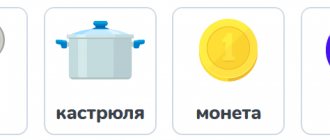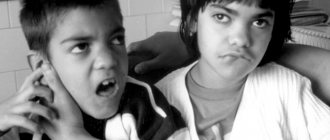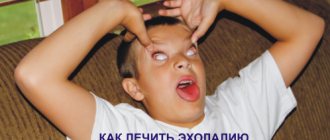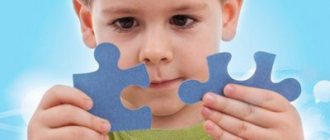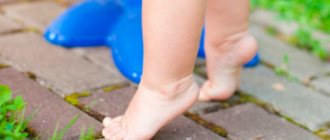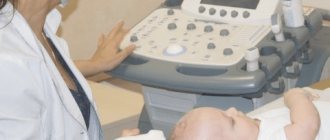Detailed information on the cerebral palsy rehabilitation program, necessary documents and available dates for the patient’s admission - call +7(495) 128-77-43
Cerebral palsy (cerebral palsy) is a congenital pathology of the central nervous system, which results in impaired brain function. This disease and its consequences cannot be completely eliminated, therefore treatment of cerebral palsy in children and adults consists of regular rehabilitation courses, constant work at home and specially equipped conditions in Moscow. For special indications, orthopedic surgeries may be prescribed.
Video about → Our team → Photo walk through the center →
Neurological disorders associated with cerebral palsy limit mobility and prevent a person from fully interacting with the outside world. The disease is characterized by:
- Violation of movements and muscle tone. Movements seem clumsy, unnatural, jerky. Muscle tone may be increased or weakened, causing gestures and facial expressions to be either sharp or sluggish and slow.
- Mental retardation Mental retardation is not diagnosed in all cases. The higher the intellectual level of the patient, the lower the degree of disability established.
- Incorrect, slurred speech Due to decreased muscle tone, patients are not able to accurately control the position of the lips, tongue, and throat function, so the reproduction of individual sounds and coherent speech are difficult or impossible.
- Seizures As a rule, appear in the first months of life. Difficult to distinguish because they often coincide with pathological movements caused by the disease.
- Skeletal deformation Cerebral palsy is characterized by shortening of the limbs. Without proper orthopedic rehabilitation, scoliosis and curvature of the pelvic bones are added to the existing disorders of the musculoskeletal system.
- Joint contractures The movement of the joint is limited and cannot be performed with full amplitude.
- Development of strabismus or myopia Many patients are diagnosed with visual impairment.
Cerebral palsy does not progress, but if physical and medical rehabilitation is not provided for patients with cerebral palsy, the condition of patients may become more complicated as they grow older. This occurs due to the emergence of new disorders caused by existing congenital pathologies. Early measures aimed at the recovery of children with cerebral palsy help prevent complications. They conduct rehabilitation programs for cerebral palsy for adolescents from 14 years of age and adult patients with this disease.
Comprehensive rehabilitation program for cerebral palsy in children and adults
The course is based on tools that will help correct the impairments caused by cerebral palsy and strengthen the patient’s socialization skills, ability to learn and self-care. A large role in this is played by therapeutic exercises, hydrokinesitherapy, kinesiotherapy, as well as staying in the sensory room.
Our rehabilitation center has extensive experience in working with cerebral palsy. This helps to develop effective recovery programs taking into account the individual characteristics of each patient.
The course includes:
- Individual kinesiotherapy - 20 procedures;
- Individual mechanotherapy – 20 procedures;
- Individual hydrokinesitherapy – 8 procedures;
- Classic massage - 10 procedures;
- Physiotherapy - 20 procedures;
- Balance training - 10 procedures;
- Speech therapist - 8 lessons;
- Neuropsychologist - 4 sessions;
- Ergotherapy - 6 procedures;
- Social adaptation - 14 procedures.
To create an optimal course of recovery, each patient undergoes diagnostics, which helps determine the degree of development of the disease, the specificity and complexity of the disorders.
Examination by medical specialists:
- neurologist;
- therapist;
- physiotherapist;
- physical therapy doctor;
- urologist;
- psychologist.
During the diagnostic process the following is carried out:
- clinical blood test studies;
- general blood and urine analysis;
- analysis for the presence of infections;
- ECG;
- chest x-ray;
- x-ray of joints and bones;
- Ultrasound of the kidneys, ureters, bladder, abdominal and pelvic organs.
After completing a course of recovery and adaptation, patients with cerebral palsy use in real life the practical skills of self-care, work and everyday life acquired in our center. They cope with physical and mental tasks more confidently, become more socially active, and cope more easily with difficulties caused by a neurological disease. In reviews of the treatment and rehabilitation of cerebral palsy, our patients and their relatives regularly thank us for our professional work.
Practical recommendations
- If your child has sleep disturbances, try to adjust his daily routine. It is necessary to create a calm environment for him, to refuse overly active, noisy games before bedtime. As far as possible, reduce the effect of external stimuli on his senses. Stop listening to music, or let it be soft, unobtrusive instrumental compositions. (Songs with lyrics in a language familiar to the child will be an additional burden for perception, and, therefore, another irritant that prevents the child from relaxing and falling asleep.) Limit watching TV.
- In order for a child to develop an adequate assessment of himself and the world, parents and loved ones, it is necessary to abandon excessive guardianship towards him. The strength of the child’s volitional qualities will depend on how the family perceives the child – as a disabled person who is unable to achieve success in life, or as a person, albeit in some ways different from those around him, but taking an active life position.
- If in the process of working with a child you notice that he is tired - has become irritable, aggressive, or, on the contrary, is overly withdrawn - you should not try to continue working. In order for work with a child to be fruitful, he himself must first of all be interested in it. It's better to take a break, offer him something to play, or just leave him alone for a while. It is likely that after some time the baby will regain energy, and you will be able to continue your activities with renewed vigor.
Recovery time for children and adults with cerebral palsy
The sooner the stages of social and physical rehabilitation of disabled people with cerebral palsy , the faster and more effective the process of recovery and adaptation of the patient in real life will be, taking into account the limitations caused by the existing disease. It is important to introduce rehabilitation measures into the life of a child with cerebral palsy from the first day of birth. If there is insufficient attention to disorders caused by cerebral palsy, the first complications may appear already in early adolescence. Adult patients with cerebral palsy who have not previously received appropriate treatment are more difficult to rehabilitate and require additional attention from rehabilitation specialists.
The basic recovery course for patients with cerebral palsy, compiled by specialists in Moscow, lasts 30 days. The proposed program can be adjusted depending on individual indications.
Psycho-emotional and personal development of the child
The degree to which a child’s psycho-emotional development deviates from normal indicators depends on many factors. And first of all, this is the mental development of the child and the degree of damage to his brain. However, the attitude of the people around the child is no less important.
Psycho-emotional abnormalities in children with cerebral palsy can manifest themselves in different ways. Thus, some children are overly irritable, excitable, and are characterized by sudden changes in mood throughout the day.
Some guys, on the contrary, are shy, fearful, they have difficulty making contact with others, and do not show initiative in their actions.
Most children are characterized by delayed mental development of the infantilism type. This means that they exhibit underdevelopment of the emotional-volitional sphere of personality.
Intelligence in such cases may correspond to the norm. However, it is the emotional sphere that is revealed to be immature.
Parents of a sick child should know that all responsibility for his mental development, for the formation of his character, etc. lies with them. Excessive care and compassion will ultimately lead to the fact that he will withdraw into himself even more and will not develop as a person.
Treatment conditions for patients with cerebral palsy in Moscow
The number of disabled people diagnosed with cerebral palsy is growing every year, which is largely due to improved quality of diagnosis and tracking system for patients with pathologies of the central nervous system. Timely detection of this type of violation significantly increases the patient’s chances of successfully combating the limitations that this disease dictates. Today, relatives and representatives of such patients often seek help abroad, but modern rehabilitation centers in Russia are not inferior in the quality of treatment for childhood cerebral palsy.
In Moscow, for the purposes of sanatorium treatment and rehabilitation of patients with cerebral palsy, both time-tested mechanical systems and innovative robotic complexes are used to restore movement functions. In addition, every year, as a rule, brings new technical discoveries, including those related to the global Internet network, which can significantly expand the capabilities of patients with a high degree of disability.
Staying in a rehabilitation sanatorium for a cerebral palsy treatment program includes adherence to the correct regimen of physical activity and rest, nutrition, rehabilitation activities and procedures, as well as sociocultural adaptation (creative events, visiting exhibitions, theaters, etc.).
Factors influencing the child's will
Factors influencing the will of the child can be divided into:
- external, which include the conditions and nature of the disease, the attitude of others towards the sick child;
- and internal ones, such as the child’s attitude towards himself and his own illness.
Weakness of will in most children suffering from cerebral palsy is directly related to the characteristics of their upbringing. Very often in a family with a sick child, one can observe the following picture: the attention of loved ones is focused exclusively on his illness, parents show concern about every issue, limit the child’s independence, fearing that he may get hurt or fall, or be awkward. In such a situation, the child himself will inevitably be overly restless and anxious. Even infants subtly feel the mood of loved ones and the atmosphere of the space around them, which are fully transmitted to them. This axiom is true for all children - both sick and healthy. What can we say about children suffering from musculoskeletal disorders, who are distinguished by increased impressionability and acuteness of feelings?
Or another picture: an unhappy mother who, while caring for her child, forgets about her own life and becomes a hostage to illness. She looks tired and unhappy. But any child needs a happy mother, capable of giving love and warmth, and not her health and nerves. For a sick baby, this need is a thousand times greater.
All this leads to the fact that the child grows up lacking initiative, unsure of his strengths and capabilities, and timid. He resigns himself to his illness and does not strive for independence. He expects in advance that those around him will do everything for him. Over time, the child gets used to this state of affairs and finds it comfortable. And from here comes a pronounced egocentrism, the desire to manipulate people.
The importance of the educational position of parents in relation to children with cerebral palsy is confirmed by the fact that the children among them with a high level of volitional development come from families that are prosperous in terms of the psychological climate. In such families, parents are not fixated on the child’s illness. They stimulate and encourage his independence within acceptable limits. They try to form adequate self-esteem in the child. Their attitude can be expressed by the formula: “If you are not like others, this does not mean that you are worse.”
We must not lose sight of the child’s own attitude towards the illness. It is obvious that he is also significantly influenced by the situation in the family. Studies have shown that awareness of the defect in children with cerebral palsy manifests itself by the age of 7-8 years and is associated with their worries about the unkind attitude of others and lack of communication.
Children can react to the current situation in different ways:
- the child withdraws into himself, becomes overly timid, vulnerable, and strives for solitude;
- the child becomes aggressive and easily enters into conflict.
The difficult task of forming a child’s attitude towards his own physical defect again falls on the shoulders of the parents. Obviously, this difficult period of development requires special patience and understanding from them. The help of specialists should not be neglected. For example, it is quite possible to overcome a child’s worries about his appearance thanks to well-organized psychological work with him.
Thus, the characteristics of the development of the personality and emotional-volitional sphere of a child with cerebral palsy largely depend not only on the specifics of the disease, but primarily on the attitude of parents and relatives towards the child. Therefore, you should not assume that the reason for all the failures and difficulties of upbringing is the baby’s illness. Believe me, you have enough opportunities in your hands to make your baby a full-fledged personality and just a happy person.
Medical rehabilitation of patients with cerebral palsy
In addition to clinical, laboratory, functional diagnostics and physiotherapeutic methods of recovery, treatment includes the selection of medications. In the case of cerebral palsy, the main goal of drug therapy is to control seizures, relieve muscle spasms and pain.
For each patient undergoing rehabilitation after a stroke, traumatic brain injury or cerebral palsy, an individual drug therapy plan is selected based on the clinical recommendations of specialized doctors at our center.
Home schooling
This type of training is preferable. There is a familiar atmosphere here, there are opportunities for relaxation, breaks for sleep and food. The school definitely cannot offer this. On the other hand, there must be someone who is constantly with the child and supervises the activities. Teachers will come to the student. Here he is deprived of the function of communicating with other children, which is not very good: he will not have full social experience, like other children. Such children develop worse speech, and their behavior becomes even more unstable. Parents and teachers make concessions to him and often indulge his desires - this has a negative impact on personal development.
Education is not all that children with cerebral palsy need. You will need the supervision of a doctor, and sometimes the presence of a nurse. Massages and a swimming pool are very helpful in relieving stress and pain from muscle tension. They will also have to be visited regularly. This is also an opportunity to develop your child according to an individual program.
Of course, a child or teenager feels comfortable at home, they are surrounded by the care of their parents. If upbringing is done correctly, children can be quite gentle and understanding. The better the intellect is preserved, the easier it is to cultivate normal moral qualities. The main thing for adults to remember is that their child will not always remain small. We need to prepare him for adult life as much as possible.
Video: Neurochat helps patients who cannot speak!
The innovative Neurochat program has become an excellent assistant for patients who are unable to clearly express their thoughts. Already today, the new system is actively being introduced into the processes of rehabilitation after traumatic brain injuries, stroke, cerebral palsy and multiple sclerosis. The first clinical trials of the Neurochat system took place in a rehabilitation hospital on October 10, 2021.
Detailed information on the cerebral palsy rehabilitation program, necessary documents and available dates for the patient’s admission - call +7(495) 128-77-43
Positive emotions
Social educators and psychologists are very good. You need to listen to their advice and draw conclusions. But the child also needs to be given the opportunity to go to church, where he will improve both in the short and long term. Christianity cannot be considered only as a moral teaching; it is also healing, both spiritual and very real, physical.
It is also very important for a child to expand his horizons. It’s good, of course, if you have a computer at home, and it can be used both for games and for learning and work. But we must not forget that children love to play with their peers. It would be good if he had friends, and real ones, and not through social networks. An ordinary club will not work, but perhaps in the city there is an opportunity to spend time with other children with cerebral palsy, and even better - with healthy children. Even if he cannot draw, sing, dance, sometimes it is enough just to look at other children from the outside, and not only new impressions and emotions will arise, but a desire to improve his own life will arise.
Going to exhibitions, theaters, performances, dance competitions, various crowded events, city holidays - this should be present in life on a regular basis. But man does not live by only one culture. No matter how difficult it may be, you need to get out into nature - fishing, a beach holiday by the river or local lake. If possible, organize a resort vacation. Of course, all this is problematic, but we must take into account that these efforts have a good effect not only on the child, but also on the parents - there is an opportunity to communicate more closely with the child, and his positive emotions, his joy will pass on to the father and mother, who, caring about the child, they automatically take care of themselves.
Complications
The negative consequences of the disease are reflected mainly in the condition of the musculoskeletal system. Possible complications include:
- formation of contractures;
- risk of developing joint pathologies - arthrosis;
- muscle atrophy;
- increased risk of injury resulting from poor coordination of movements, unsteady gait, and falls.
Avoiding complications and achieving the most effective rehabilitation of a child is possible only with timely diagnosis and early initiation of treatment.
Diagnostics
To determine lower spastic diplagia, a set of diagnostic measures is used. Diagnosis at an early age is often difficult, which creates problems in timely treatment.
Diagnosis is carried out by a pediatric neurologist, and consultations with a pediatrician, ophthalmologist, and otolaryngologist are also prescribed. Pay attention to the history of childbirth, such facts as prematurity, hypoxia during intrauterine development, asphyxia during childbirth.
A neurological examination is of great importance in diagnosis, during which attention is paid to the characteristic signs of disturbances when walking, increased muscle tone, increased tendon reflexes, and impaired skin sensitivity.
Diagnostic measures also include:
- consultation with an ophthalmologist to determine visual acuity and identify oculomotor disorders;
- audiometry by an otolaryngologist, carried out to determine hearing acuity and its possible disorders;
- electroencephalography - performed to assess brain activity;
- neurosonography - necessary to exclude other pathologies with similar symptoms, such as hydrocephalus, cysts, intracranial hematoma;
- MRI of the brain - usually performed when it is necessary to clarify previous diagnostic data.
The child’s level of psycho-speech development is assessed. This is done by a child neurologist (at an early age) or a child psychiatrist. If necessary, tests are performed to determine the level of delay in psychological and speech development or to diagnose mental retardation.
Small conclusion
Thus, inclusive education, at its core, is an excellent opportunity for children with special needs to enter an atmosphere of social communication. We can only hope that it will be fully implemented in the post-Soviet space.
The opportunity for different children, with different abilities, to be together, make friends, play, learn to help each other, take care of each other and understand that all people are different, but everyone lives together on the same Planet and under the same sky. It’s just that among them there are those who are the same as the others, only they have fewer opportunities, but they have the opportunity to say - I’m learning!
Prevention
Prevention of the disease should be carried out during the period of pregnancy by the mother. A pregnant woman must register with a specialized medical institution on time to manage her pregnancy.
During the entire period of bearing a child, it is prohibited to smoke or drink alcoholic beverages. Bad habits reduce the supply of oxygen and increase the risk of developing hypoxia in the fetus.
If a woman was taking medications before pregnancy, she should notify her doctor. Not all medications are safe for the development and health of the unborn baby.
Preventive measures also include following the rules of a balanced diet and eliminating negative emotions during pregnancy. Regular visits to the doctor will help prevent intrauterine developmental disorders.
